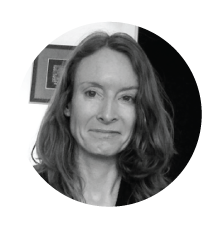By Colleen Addison

Too often I think about eating disorders in the negative: how many people are still suffering, how much work still needs to be done. But I was thinking, the other day, about how much has changed since I had my eating disorder, years ago. How much progress has been made.
In 1992, when I was anorexic, eating disorders were relatively new in the popular imagination. Sure, they weren’t actually new. Researchers agree the honour of identifying and naming the so-called first eating disorder, anorexia nervosa, falls in the English world to famed 19th century physician William Withey Gull who published articles in 1868 and 1874. But in 1983, the death of celebrity Karen Carpenter catapulted eating disorders onto the world stage. Eating disorders were The Topic of the 1990s. I remember a long list of ’90s actresses and celebrities, whose eating disorders loomed large in media coverage: Christina Ricci, the delicate child star who never seemed to get any bigger. Tracey Gold, the sister from the sitcom “Growing Pains,” victim of a thousand laugh-track jokes about her weight, who suddenly appeared smaller and whose character subsequently got a boyfriend. Princess Diana, endlessly scrutinized for her appearance pre- and post-divorce.
During the 90s, I watched a never-ending series of after-school specials, read story after story from my local library, and sat through numerous health classes, all designed to Prevent Eating Disorders in us, the girls of the day. But what I remember most were the comments people made, in the stories and health classes, that marked the perception of eating disorders as different from today and showcase the progress that has been made. I’m grouping those comments into three groups:
1) Racism. In health class, I remember our teacher in front of the blackboard, her finger with its cherry pink nail polish pointing straight at us. I remember not liking her, but there’s no denying she was deadly serious as she looked at the rows of us girls lined up in our desks in front of her. I remember her with a lisp, with “you girls” coming out “you girlth.” “You girlth,” she said, her finger shaking with emotion, “are at high rithk for eating problemth. You girlth are middle clath. You girlth are white.”
This fact has been mentioned on this blog before, but it’s difficult and even embarrassing to remember how I, until quite recently, was told and believed that eating disorders were the prerogative of the white. Karen Carpenter was white. So were Ricci and Gold. Every person that I remember seeing on the media who admitted to having, or was suspected of having, an eating disorder was white. But it was more than this. I was told that only white people felt the cultural pressures that were the cause of eating disorders in general, and anorexia in particular.
This was a common belief at this time. Joan Jacobs Brumberg, author of the 1988 book Fasting Girls: The History of Anorexia highlights ethnicity and even comments that “black anorexia” is very rare. Rudolph M. Bell, whose book Holy Anorexia suggests that female medieval religious figures also often had eating disorders, reports that eating disorders were culturally bound; that culture was Western and white. When people of “other races” did get eating disorders, Brumberg and Bell wrote, these disorders were a result of the spread of Western culture into other countries, not something native to the other countries themselves. Eating disorders were white diseases. Under ordinary circumstances a person from another ethnicity would never fall victim to an eating disorder.
I look at how eating disorders are seen today, and I’m amazed how this idea, which I once believed so completely, has now dwindled. When you click on the World Eating Disorders Day website, the screen fills with people of all ethnicities. The media personages who talk about their own experiences aren’t all white; Jessica Alba, Demi Lovato, Naya Rivera, and Oprah Winfrey have all acknowledged their eating disorder pasts. The stereotype of white=eating disorder may still exist; a recent (2014) House of Commons report, “Eating Disorders among Girls and Women in Canada” talks about a possible bias among health care practitioners who may believe that people of other ethnic identities cannot have eating disorders. But this report cautions against that bias. This is all progress, and it’s amazing.
2) Singularity. From another health class, I remember a different teacher, a man in a grey suit, who I remember as middle-aged but who in my mind’s eye looks quite young and earnest. I remember him trying to prove his open-mindedness. “Anorexia is the most serious, it’s true,” he said, looking us all in the eye. “But there are other eating disorders. Some people eat a lot.” Everybody laughed.
The hierarchy of eating disorders has been mentioned before on this blog (Advice by Kaela, April 27, 2017). But it’s odd now to realize that I was told, and fully and completely believed, that anorexia was the most serious, the most important, and scarily, sometimes the only eating disorder. All the advice given, the warnings about, and the reasons for eating disorders were about anorexia.
As a young girl, the only eating disorder other than anorexia I had really heard about was bulimia, which I later learned was identified in 1979 as an “ominous variant” of anorexia. Other eating disorders, including binge disorder, were not spoken about beyond that one comment in health class. Bulimia itself was usually portrayed as a less serious condition. You could die of anorexia, I was told; bulimia would only give you dental difficulties and an odd look or two at the dinner table. The historian Brumberg portrays bulimia as not a variant but an accompaniment to anorexia and questions whether we even need to give this disorder a separate name. Bell in his own book doesn’t even mention bulimia, in spite of the fact that his saints often display this type of behaviour.

There’s been progress made here too. We now know that bulimia often occurs separately, not simply as an add-on. Media personages have revealed their experiences with other eating disorders, beginning with Princess Diana (bulimia) and Elton John (bulimia) all the way through to Oprah Winfrey (binge eating disorder). Websites such as World Eating Disorders Day site and the National Eating Disorder Information Centre of Canada define the most common eating disorders with an ‘s’, as does the House of Commons report; these eating disorders are not limited to anorexia but include bulimia, binge eating disorder, and others. These diseases are considered far more serious than they were in the ’90s. The House of Commons report details the ways in which all eating disorders, not only anorexia, can cause death. All these things mark a real change from years ago and show real progress.
3) Gender. I don’t remember which one of the teachers it was, but in health class, I remember a handout: two figures stand in front of two mirrors upon which appear two distorted reflections. The first figure, a girl, is normal-sized but sees a fat image in the glass. The second figure, a boy, is muscular but sees a thin boy staring back at him. I remember the teacher pointing out that the image of the boy didn’t show anything that serious. Here I remember being told to fold the handout so that only one of the images was displayed, so that we could focus on the girl.
Men had eating disorders when I was young, among them my own uncle. So it wasn’t that I didn’t know that men could get eating disorders. But I was always told that men with eating disorders were somehow different than ordinary men, outsiders. Bell talks almost exclusively about female religious figures; the one man he briefly mentions is thought to be also an outsider, a very poor lower class man who entered the church. Brumberg talks occasionally about men, often the 19th century “hunger artists,” poverty-stricken men who starved themselves for money. The very title of her book (Fasting Girls) though, shows that she too believes it’s really women who get eating disorders.
This gender bias, too, has changed. Pictures on the World Eating Disorders Day website show people of all genders. Media personages who are male have spoke of their suffering from eating disorders: Dennis Quaid, Russell Brand, Elton John, Billy Bob Thornton. Articles on the National Eating Disorders Information Centre speak about various notions of masculinity that can lead to eating disorders (“The Culture of Buff and Lean”). Even the House of Commons report, despite its title, “Eating Disorders among Girls and Women in Canada”, mentions the 20% of reported 2014 Canadian eating disorder sufferers who were male. This, too, is amazing progress and marks a real shift from what I was told and what I believed.
It’s been over 20 years since I was anorexic. I myself have made some real progress there. But it’s great to see that the world has too, that the ideas of eating disorders have come so far.

Colleen recently completed a PhD in information science, looking at the ways in which people perceive and respond to health information. She loves yoga, Pilates, jasmine tea, and her little cat Summer.